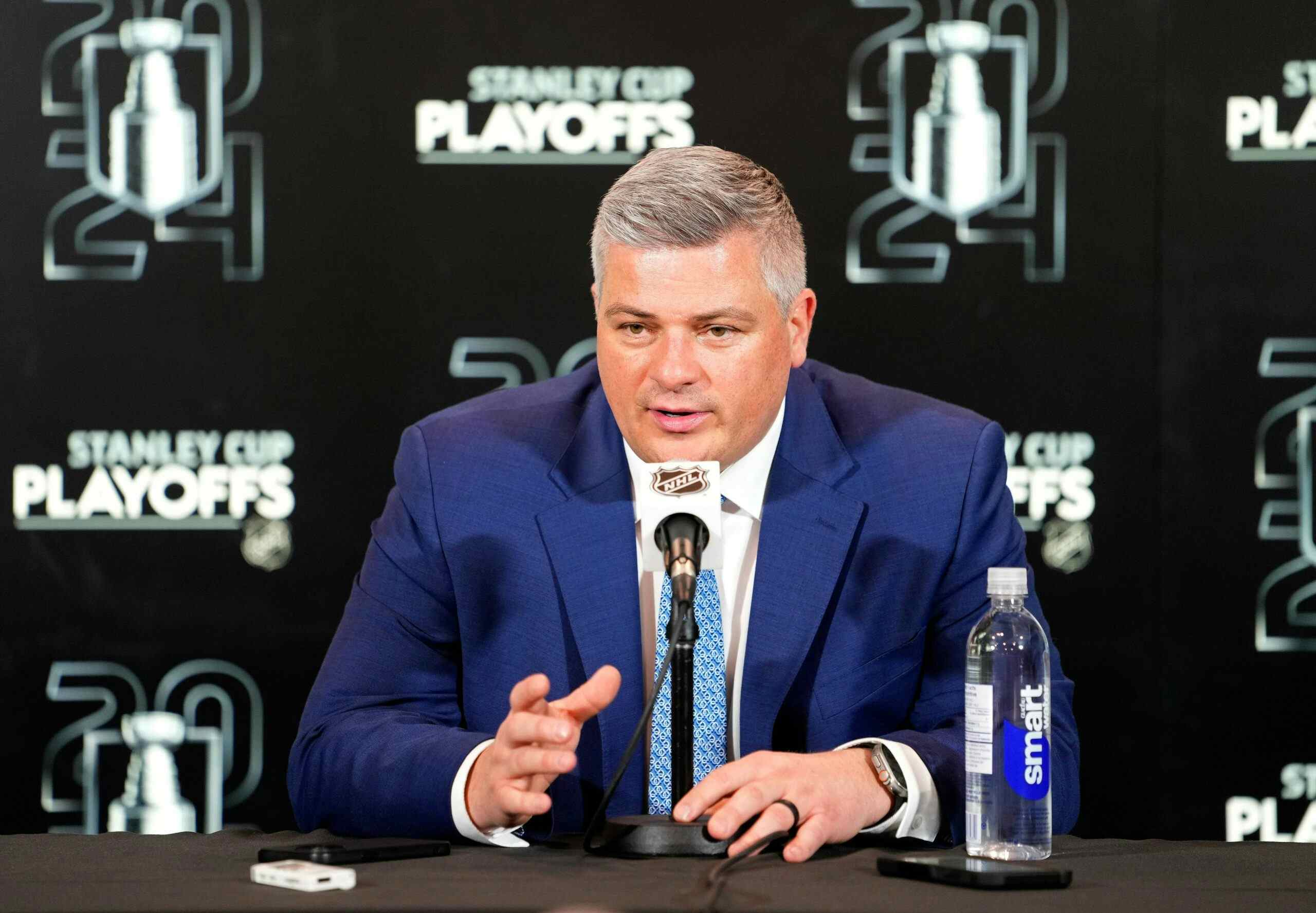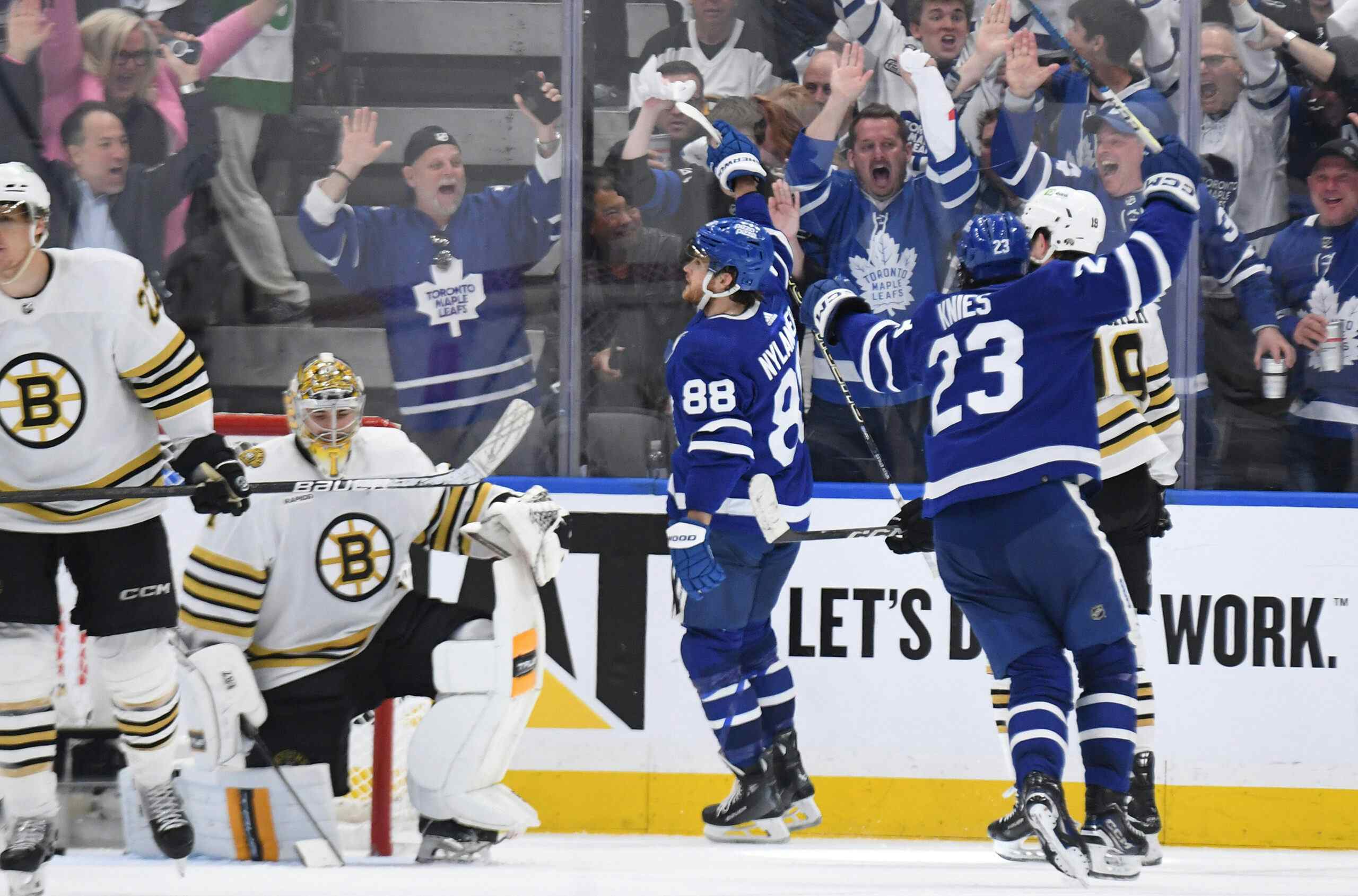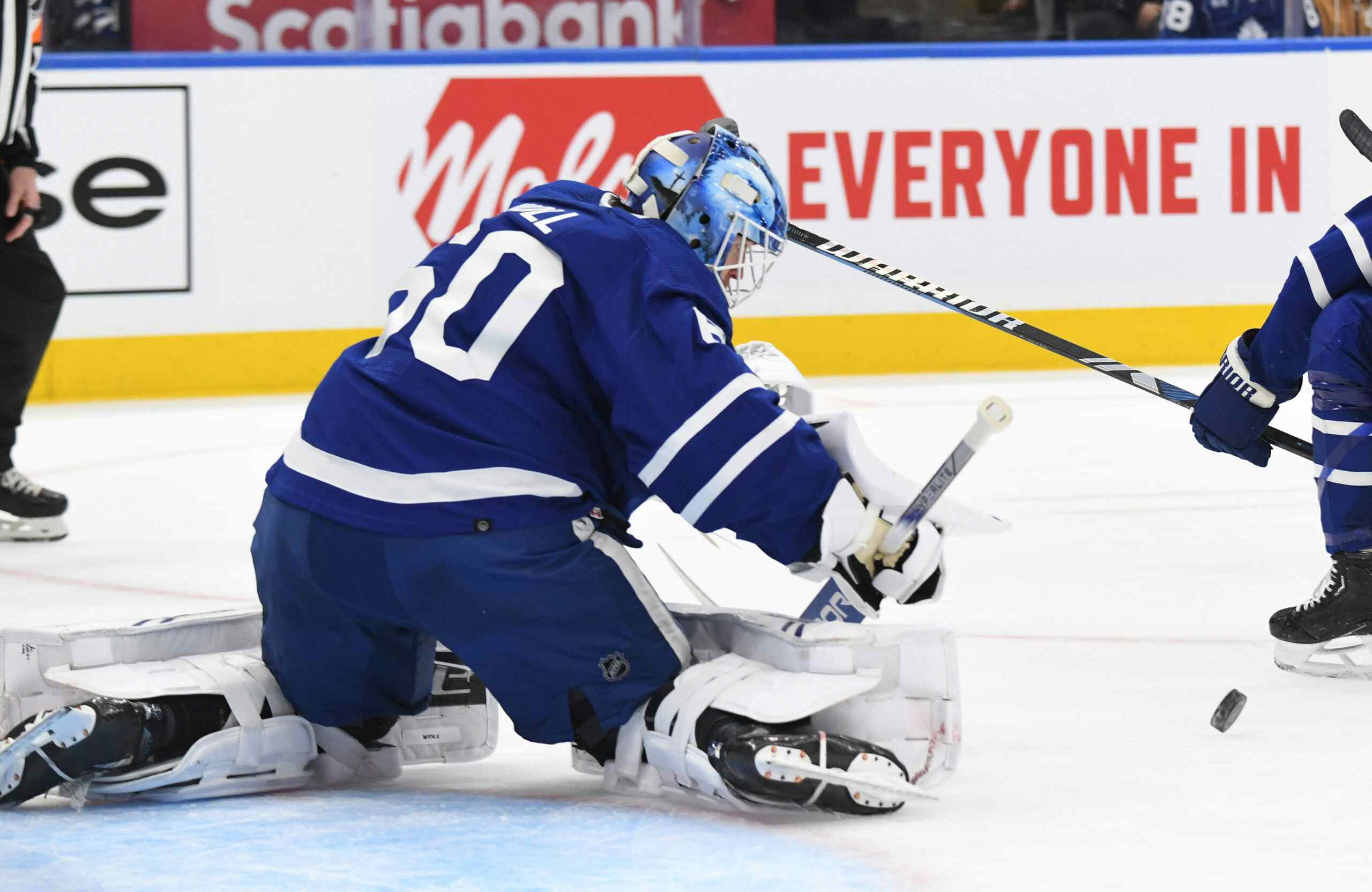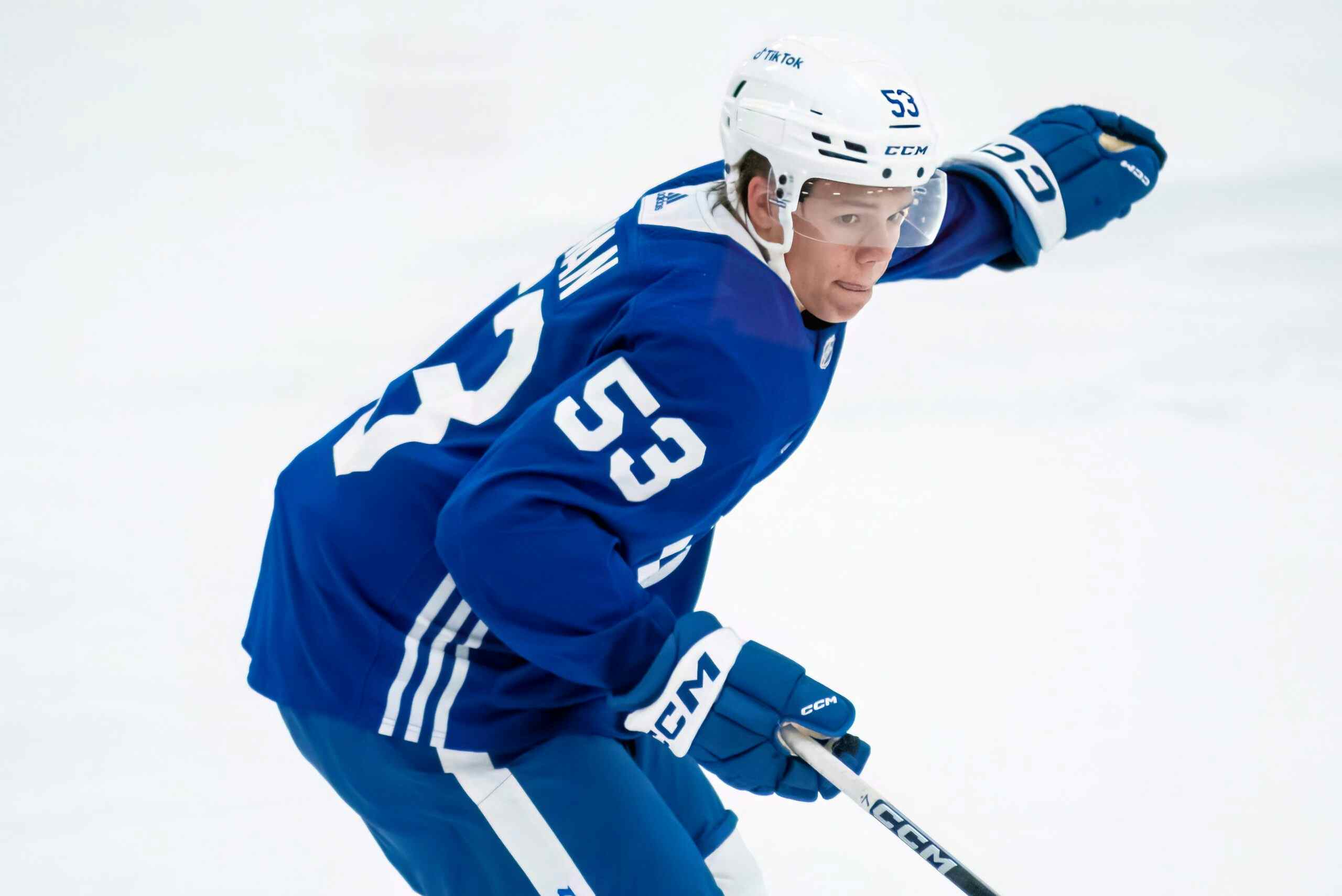A “meaningful gulf” in the quality of centremen
By Cam Charron
11 years ago
I’ve been blogging about the Leafs for a short time, and after watching maybe about 40 games last season and looking at all the data available, there are fewer things on this world I am more sure about than “Mikhail Grabovski is the #1 centreman on this team”.
This doesn’t mean the Leafs need to look at more options to get a better second-line centreman. In fact, that ought to be their second priority behind another top-three defenceman. Unfortunately, with so many quality players locked into long contracts with their current clubs, pickings are slim.
The words “meaningful gulf” are equated to the divide between the NHL and the NHLPA during their lockout talks. After every round of meetings, Donald Fehr and Gary Bettman come out of the lroom and explain to a huddled mass of reporters that the other side has cancelled Christmas. From a Leafs perspective, “meaningful gulf” explains the difference in quality between Mikhail Grabovski and Tyler Bozak.
It’s not just offensive numbers, either. A lot of discussion on newspaper columns or sports talk radio involves important things like “goals” and “points”, but they only tell the story of how a player did at one end of the ice. Half of hockey is offence, and the other half is defence. Saving a goal at one end is equally important than scoring a goal at the other.
Yet in baseball and basketball, statistics are used to provide a picture of only a player’s offensive contribution. You talk about batting averages and points per game and rebounds and little about what happens on the other side of the ball. Football is a bit difference because there are players who are brought in entirely to play defence, so you look at tackles and pass deflections and these minute numbers that, without context, mean very little.
On this blog, I like to talk a lot about a player’s “Corsi” rate, primarily in percentages. Puck-possession is an important factor since when a team has the puck, it guarantees two things:
- The team has a chance to score on offence
- The team is protecting the puck from the defence
The way Corsi is calculated is either like +/- over a 60-minute period (ex: the Leafs were -6.2 shots per 60 minutes of play with so-and-so on the ice) or by percentage, which I think does a better job at explaining the possession aspect. Hockey isn’t a game of numbers, it’s a game of ratios. You win when you score more than 50% of the goals, period.
There are three websites we can use to learn of a player’s puck-possession ability, and all of them express the number in a different way. This one here, Hockey Analysis by hockey blogger and frequent commenter David Johnson, is an excellent resource because it shows us how a player performed both with and without a certain player on the ice.
So the differences between Mikhail Grabovski and Tyler Bozak are startling.
I’ve mentioned in the past that no Leaf skater was a plus-possession player without Mikhail Grabovski also on the ice. This is a fact that will continue to be true until we start the next season, when maybe some of the information will change, but it won’t prevent Grabovski from being a cost-controlled two-way force drastically underappreciated by Leafs fans.
Follow these two charts:
| With Grabovski | Without Grabovski | |
|---|---|---|
| Brown | 0.509 | 0.471 |
| Connolly | 0.556 | 0.472 |
| Crabb | 0.476 | 0.486 |
| Frattin | 0.552 | 0.440 |
| Kessel | 0.635 | 0.483 |
| Kulemin | 0.525 | 0.470 |
| Lombardi | 0.441 | 0.464 |
| Lupul | 0.592 | 0.480 |
| MacArthur | 0.560 | 0.445 |
| With Bozak | Without Bozak | |
|---|---|---|
| Brown | 0.450 | 0.474 |
| Connolly | 0.470 | 0.479 |
| Crabb | 0.455 | 0.486 |
| Frattin | 0.407 | 0.503 |
| Kessel | 0.488 | 0.508 |
| Kulemin | 0.259 | 0.521 |
| Lombardi | 0.445 | 0.468 |
| Lupul | 0.495 | 0.466 |
| MacArthur | 0.424 | 0.524 |
For the benefit of the class, I’ve bolded the player combinations that were plus-possession. Six of the nine regular Leafs who didn’t play centre (David Steckel was excluded) are plus players with Grabovski. Zero without. Zero of the same Leafs are plus-possession with Bozak, and four are without.
Now, this double counts things, and part of the reason why Bozak’s WOWY (with-or-without-you) numbers are so brutal is because he saw 1:11 of time with Grabovski this season, who is indisputably the Leafs’ best two-way player. For all the grief we give Phil Kessel and Joffrey Lupul in this space for not being good defensively, look what happens to their possession totals when they play alongside an elite centreman.
This is an advantage of depth. The Kings had Anze Kopitar and Mike Richards. The Devils had Travis Zajac and Adam Henrique. The Bruins had Patrice Bergeron and David Krejci. The Canucks had Henrik Sedin and Ryan Kesler. Going back through Stanley Cup champions, you can see the benefit of having two quality centremen.
I’ve mused about what could happen if, say, Nazem Kadri was able to come play between James van Riemsdyk and Clarke MacArthur, or van Riemsdyk and Nikolay Kulemin, or any combination of wingers that makes logical sense. Finding a centreman out of your prospect pool is a cheap and honest way to add a quality man to your team. Kadri has good puck possession numbers, but has he played enough time in the NHL to warrant consideration as a two-way player?
If he is, it certainly makes the Leafs a better looking team up front:
Lupul – Grabovski – Kessel
van Riemsdyk – Kadri – MacArthur
Kulemin – Connolly – Frattin
Komarov – McClement – Steckel
(Brown, Bozak)
van Riemsdyk – Kadri – MacArthur
Kulemin – Connolly – Frattin
Komarov – McClement – Steckel
(Brown, Bozak)
I think later I may explain my rationale for holding Jay McClement and Steckel on the same line. It’s not a perfect forward unit, but it’s perfectly acceptable. There’s the one dominant top unit and a competent second and third unit.
Where does this leave Tyler Bozak? I’m just not convinced he’s a major league player. His success depends entirely on who he plays with, and with so many centremen on the Leafs right now, he doesn’t exactly fit.
Also, where is Matt Lombardi? Keep in mind that the Leafs Nation has already traded him for Keith Ballard, even if the Maple Leafs themselves are a step behind us.
Recent articles from Cam Charron





